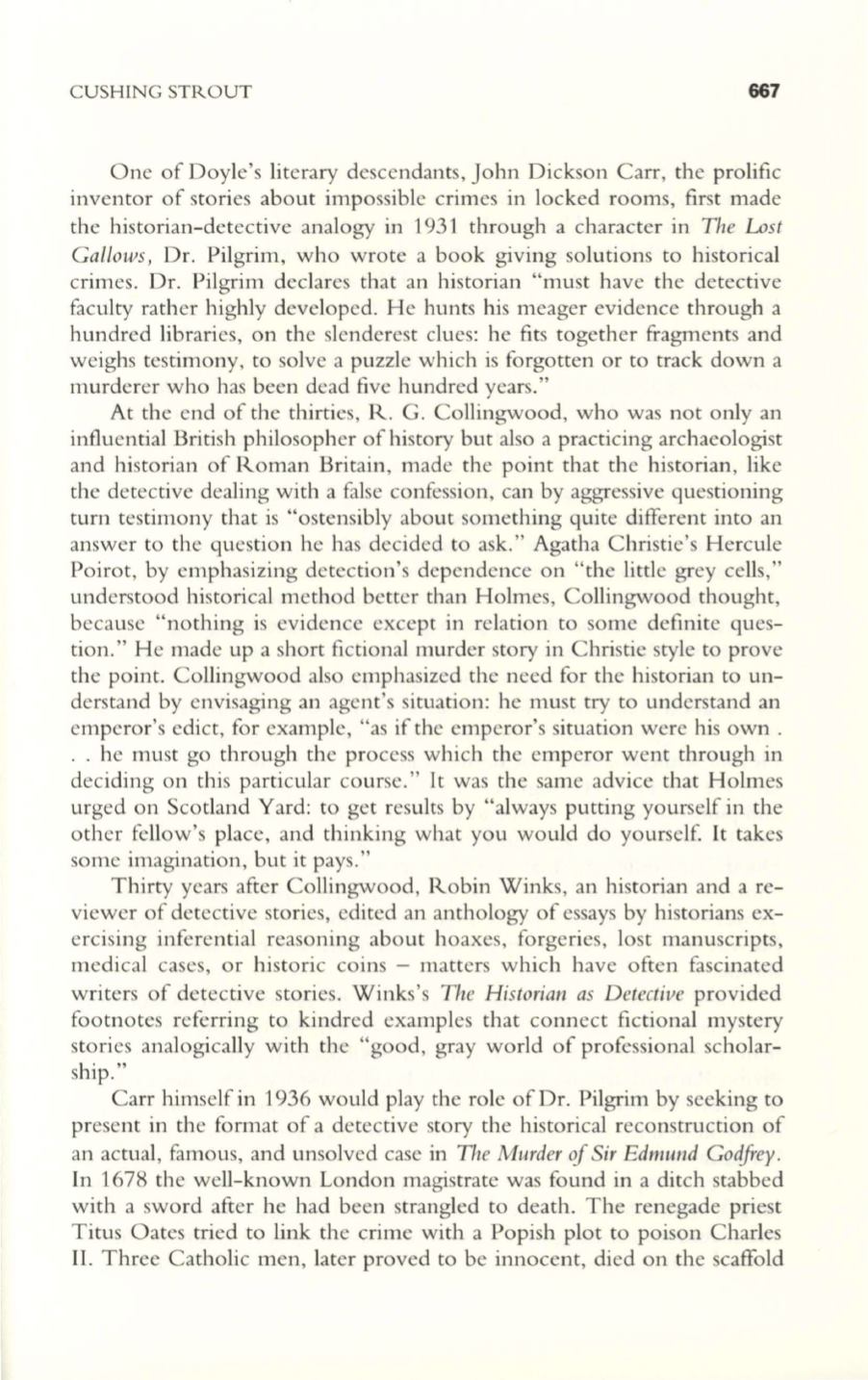
CUSHING STROUT
667
One of Doyle's literary descendants, John Dickson Carr, the prolific
inventor of stories about impossible crimes in locked rooms, first made
the historian-detective analogy in 1931 through a character in
The Lost
Gallows,
Dr. Pilgrim, who wrote a book giving solutions to historical
crimes. Dr. Pilgrim declares that an historian "must have the detective
faculty rather highly developed. He hunts his meager evidence through a
hundred libraries, on the slenderest clues: he fits together fragments and
weighs testimony, to solve a puzzle which is forgotten or to track down a
murderer who has been dead five hundred years."
At the end of the thirties, R. G. Collingwood, who was not
only
an
influential British philosopher of history but also a practicing archaeologist
and historian of Roman Britain, made the point that the historian, like
the detective dealing with a false confession, can by aggressive questioning
turn testimony that is "ostensibly about something quite different into an
answer to the question he has decided to ask." Agatha Christie's Hercule
Poirot, by emphasizing detection's dependence on "the little grey cells,"
understood historical method better than Holmes, Collingwood thought,
because "nothing is evidence except in relation to some definite ques–
tion." He made up a short fictional murder story in Christie style to prove
the point. Collingwood also emphasized the need for the historian to un–
derstand by envisaging an agent's situation: he must try to understand an
emperor's edict, for example, "as if the emperor's situation were his own .
. . he must go through the process which the emperor went through in
deciding on this particular course." It was the same advice that Holmes
urged on Scotland Yard: to get results by "always putting yourself in the
other fellow's place, and thinking what you would do yourself. It takes
some imagination, but it pays."
Thirty years after Collingwood, Robin Winks, an historian and a re–
viewer of detective stories, edited an anthology of essays by historians ex–
ercising inferential reasoning about hoaxes, forgeries, lost manuscripts,
medical cases, or historic coins - matters which have often fascinated
writers of detective stories. Winks's
The Historian as Detective
provided
footnotes referring to kindred examples that connect fictional mystery
stories analogically with the "good, gray world of professional scholar–
ship."
Carr himself in 1936 would play the role of Dr. Pilgrim by seeking to
present in the format of a detective story the historical reconstruction of
an actual, famous, and unsolved case in
The Murder oj Sir Edmund GodJrey.
In 1678 the well-known London magistrate was found in a ditch stabbed
with a sword after he had been strangled to death. The renegade priest
Titus Oates tried to link the crime with a Popish plot to poison Charles
II. Three Catholic men, later proved to be innocent, died on the scaffold


